15 Subs Kept Out of Service: 177 Months Of Drydock Backups
Posted on
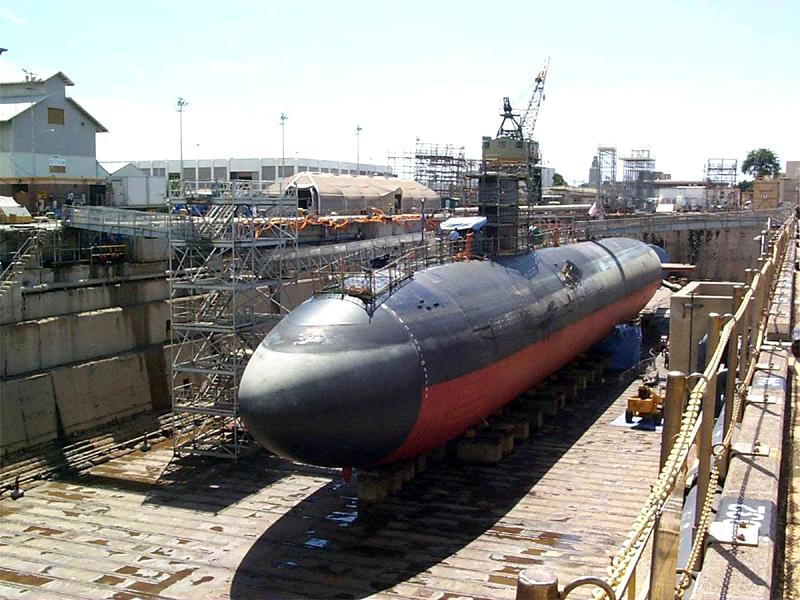
The attack submarine USS Greeneville in drydock.
WASHINGTON: A massive maintenance backlog has idled 15 nuclear-powered attack submarines for a total of 177 months, and the Navy’s plan to mitigate the problem is jeopardized by budget gridlock, two House Armed Services Committee staffers told Breaking Defense.
That is almost 15 submarine-years, the equivalent of taking a boat from the 2018 budget and not adding it back until 2033.
While only Congress can pass a budget and lift caps on spending, the staffers said, part of the solution is in the Navy’s hands: outsource more work to private-sector shipyards, something the Navy does not like to do.
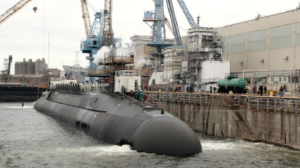
A submarine undergoes maintenance at the government-owned Norfolk Naval Shipyard.
As the submariner community prepares to gather in Washington, D.C. for the annual Naval Submarine League symposium, a lot of subs are in rough shape. The most famous case is the USS Boise, which was scheduled to start an overhaul at the government-run Norfolk Naval Shipyard in September 2016 and is still waiting. The government finally gave up and awarded a $385.6 million contract for the work to privately run Newport News Shipbuilding – just across the James River – this month. All told, the Navy says the Boise will be out of service for 31 months longer than originally planned.
But Boise isn’t the only one. Figures provided to us by HASC show 14 other submarines are affected, with projected delays ranging from two months (USS Columbia, Montpellier, and Texas) to 21 (Greeneville). And the Navy can’t simply send them back to sea, since without the maintenance work, the submarines can’t be certified as safe to dive – something the fleet takes very, very seriously ever since the USS Thresher disaster of 1963. “To ask Naval Reactors to bend the rules is heresy,” one staffer said.
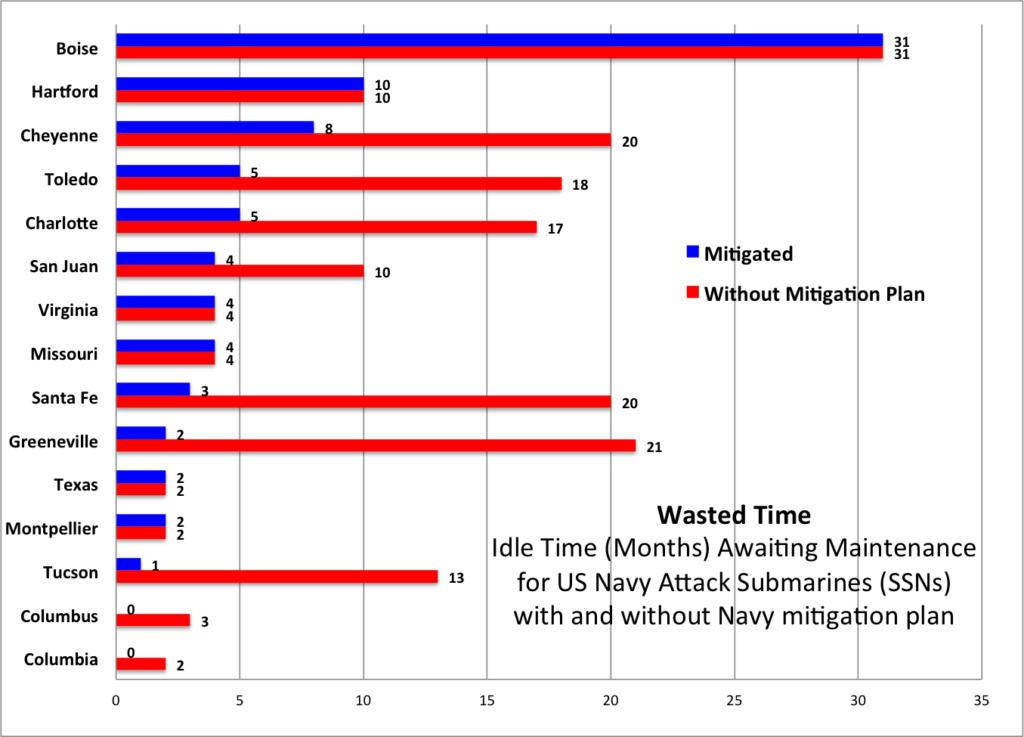
The Navy does have a plan to mitigate the problem, but it can’t get rid of it. If the Navy were able to move money, reshuffle schedules, extend certifications, and take other steps, then it would get many of the suns into maintenance sooner and slash time lost across the fleet to 81 months.
That’s still almost seven years that submarines could be at sea but aren’t. If you put all this on a single notional sub, it would lose 23 percent of its normal service life. For comparison, pro-Navy legislators are struggling to increase the annual number of attack submarines built from two to three. Losing seven years of submarine time is the equivalent of taking a new boat from the 2018 budget and only adding it back in 2025.
And that, again, is with the mitigation plan.
The chart above shows these figures. What this chart doesn’t show, the staffers warned, is a growing backup elsewhere: not in submarines needing mid-career maintenance, but in worn-out subs waiting to be decommissioned.
It turns out that you can’t just toss out a nuclear-powered war machine when you’re done with it. There’s a complex process to deactivate the reactor, remove the parts of the submarine that remain radioactive, and hand off the non-irradiated rest of the sub for dismantling.
What’s more, there’s a period towards the end of a nuclear submarine’s life when its reactor core can no longer pump out enough power for operations at sea, but it still requires supervision by a full-up engineering crew. That means old subs waiting to be scrapped aren’t just parked somewhere: About half their normal crew is still aboard. As a result, delaying decommissioning wastes both money and highly trained personnel.
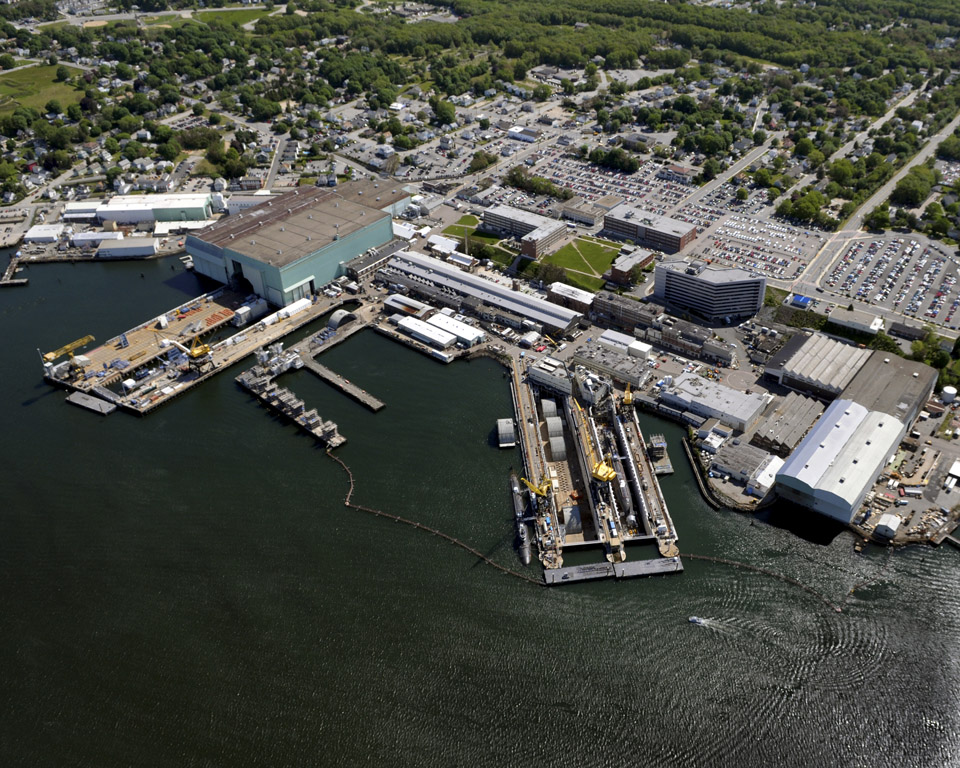
Electric Boat’s submarine-building yard in Groton, Connecticut
Deep Problems
So even assuming the mitigation plan for submarine maintenance can be implemented, there’ll be a growing problem in submarine decommissioning. But the mitigation plan itself is in jeopardy. Three of the overhauls are scheduled to start in fiscal year 2018, which began a month ago, without a federal budget. Instead, Congress has passed a stopgap Continuing Resolution, which puts government spending on autopilot, with little leeway to make the kind of adjustments the mitigation plan requires. Even if Congress passes the budget, it’s up against the Budget Control Act caps, which if not waived will undo much of the funding added for military readiness.
Past BCA-imposed cuts and Continuing Resolutions bear part of the blame for the Navy’s problems today, the HASC staffers said, as well as the mass retirements of Reagan-era craft. Today, the Navy has fewer ships to meet an unchanged workload, meaning each ship must deploy longer. As a result ships not only miss their originally planned overhaul dates, messing up the maintenance schedule, but they also come in with more wear, tear, and breakdowns than projected, causing their overhauls to take longer. That means they can’t deploy on time, which means the ships they would have relieved must stay on station longer, which means those ships will have more maintenance issues, ad infinitum. (Training often gets cut as well, with potentially lethal results).
[CLARIFIED: The Navy pointed out that while all the above is true for surface ships, the submarine fleet has largely escaped extended deployments. Click here for our followup article on submarine readiness]
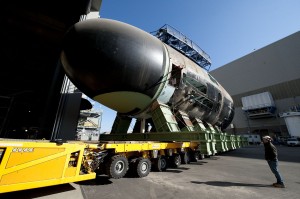
The USS Warner under construction in Newport News, one of the last two shipyards in the US able to build a nuclear-powered submarine.
The attack submarine force has an additional complication. It is nuclear powered. Key maintenance can only be done in a handful of specifically equipped yards by specially trained workers. The Navy prefers to do this in-house, but its nuclear-capable public yards have limited capacity, and they prioritize ballistic missile submarines – which make up the bulk of the nation’s nuclear deterrent – and aircraft carriers over the much more numerous attack subs. If maintenance schedules slip on a missile sub or carrier, attack subs get bumped down the list.
That’s why the Navy finally outsourced the Boise‘s repairs to Huntington-Ingalls Industries’ Newport News shipyard in Virginia. That’s one of two private yards in the country that can do nuclear work – the other is General Dynamics’ Electric Boat in New England. Unlike the public yards, the HASC staffers said, these private yards still have some spare capacity and will have it for “the next five years.” After that, work on the next ballistic missile submarine, the Columbia class, will pick up and the private yards will be at capacity too.
The Navy is telling Congress that private yards cost more and there’s no need to outsource any more subs after the Boise, but the HASC staffers are skeptical. Since Boise is getting a complete engineering overhaul, one staffer told me, that shows that “the most complex engineering event in a submarine’s life…can be outsourced.” There’s a “strategic window of about three to five years” to take advantage of the private yards being available, the staffer said, so why not take it?
Subscribe to our newsletter
Promotions, new products and sales. Directly to your inbox.
